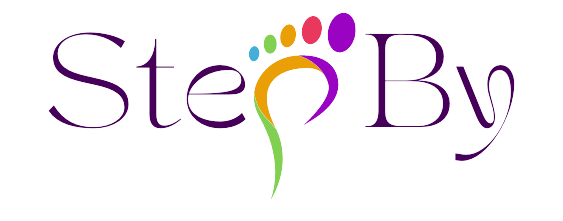Key Takeaways:
- Solo 401(k) plans offer unique benefits and flexibility for self-employed individuals.
- Understanding the rules and potential tax advantages can significantly enhance retirement savings.
- Diversification and knowledge of IRS guidelines are critical to a successful Solo 401(k) experience.
Table of Contents:
- Understanding Solo 401(k) Plans
- Setting Goals for Your Retirement
- Diversifying Your Investment Portfolio
- Navigating Solo 401(k) Plan Rules and Regulations
- The Impact of Early Withdrawals and Loans
- The Future of Retirement Savings for Solo Entrepreneurs
- Choosing the Right Solo 401(k) Plan Provider
- Common Myths and Misconceptions About Solo 401(k) Plans
- Getting Started with Your Solo 401(k): A Step-by-Step Guide
Understanding Solo 401(k) Plans
The allure of being one’s boss comes with the necessity to handle retirement savings independently. Solo 401(k) plans are an optimal choice for self-employed professionals, freelancers, sole proprietors, and small business owners who want a powerful tool for their retirement savings. Unlike traditional 401(k) plans, a self-employed 401(k) plan allows you to contribute both as an employer and employee, effectively increasing your contribution limit and potential tax deductions.
Especially attractive for those whose income can vary yearly, these plans allow for flexible contributions, meaning you can adjust your savings based on your current financial state. The Solo 401(k) also allows for investing in real estate and other non-traditional assets, providing a variety of ways to increase retirement income. Understanding the ins and outs of Solo 401(k) plans can set the foundation for a prosperous and secure retirement.
Setting Goals for Your Retirement
Highly successful retirement planning begins with a clear vision of one’s desired future. Many independent professionals delay this process due to the pressing needs of the present. However, assessing your anticipated living expenses post-retirement, possible healthcare costs, and the lifestyle you aspire to maintain can provide invaluable insight. This foresight allows you to tailor your Solo 401(k) contributions and investment strategy to align with your retirement goals.
It is crucial to frequently revisit these goals and adapt your savings plan to encompass life changes, such as family growth or changes in business income. Through consistent monitoring and adjustments, your Solo 401(k) can become the cornerstone of a well-rounded retirement plan, ensuring your golden years are as golden as you imagined.
Diversifying Your Investment Portfolio
Adequate diversification is a staple of astute investing. By spreading your capital across various asset classes within your Solo 401(k), you can mitigate risk and enhance the possibility of robust returns. This tax-advantaged retirement savings account enables access to various investment options. From the stability of bonds to the potential growth offered by equities, Solo 401(k)s give you the control to shape your investment landscape according to your risk tolerance and retirement timeline.
Navigating Solo 401(k) Plan Rules and Regulations
Staying attuned to the federal regulations governing your 401(k) is vital to ensuring you don’t inadvertently diminish its benefits. The Internal Revenue Service (IRS) prescribes specific contribution limits, distribution rules, and deadlines that Solo 401(k) account holders should adhere to. An example is the annual adjustment of contribution limits based on cost-of-living indexes.
The Impact of Early Withdrawals and Loans
Life can present situations that cause you to consider prematurely withdrawing from your retirement plan. However, early withdrawals from a Solo 401(k) are subject to penalties and taxes that can significantly erode your savings. These should only be viewed as a last resort. Similarly, although you can borrow from your Solo 401(k), this comes with specific repayment rules and the potential to disrupt the accumulation of your retirement wealth. Therefore, borrowing should be approached cautiously, understanding the long-term implications on your retirement fund.
The Future of Retirement Savings for Solo Entrepreneurs
The sphere of retirement saving for solo entrepreneurs is in a constant state of ebb and flow. Solo 401(k) plans are not insulated from this change, as regulatory adjustments and financial market evolution shape the nature of these savings vehicles. Staying informed about industry shifts and legislative amendments can give Solo 401(k) holders an edge, ensuring their retirement planning is always aligned with the best available options.
Choosing the Right Solo 401(k) Plan Provider
Selecting an appropriate Solo 401(k) plan provider is just as critical as saving for retirement. Factors such as the provider’s reputation, the range of investment options they offer, their fee structure, and the quality of customer service should all play a role in your selection process. A good provider can help simplify the management of your Solo 401(k) while ensuring it remains an effective tool for your retirement.
Common Myths and Misconceptions About Solo 401(k) Plans
The Solo 401(k) universe has its share of myths and misconceptions, which can create barriers to practical use. One common misconception is that Solo 401(k) programs offer different investment options than their counterparts. Dispelling these fallacies is an essential step toward realizing the full potential of your retirement plan.
Solo 401(k) plans offer self-employed individuals an attractive retirement savings option, but misconceptions abound. One common myth is that only business owners with employees can establish them, whereas even sole proprietors benefit. Another misconception is that solo 401(k)s require high administrative fees when they often have lower costs than other retirement plans. Additionally, some mistakenly believe they cannot borrow from their solo 401(k), overlooking the option for loans under certain circumstances. Dispelling these myths empowers self-employed individuals to leverage the advantages of solo 401(k) effective plans for their retirement savings needs.
Getting Started with Your Solo 401(k): A Step-by-Step Guide
Initiating a Solo 401(k) plan is a procedural task that invites attention to detail. A new account holder must work closely with their chosen provider to comprehend the nuances of the Solo 401(k) adoption agreement, which lays out the plan’s parameters. Following this, the future retiree must complete essential documentation to formalize their Solo 401(k), with the immediate goal of beginning contributions. A systematic and well-informed approach from the outset can yield significant dividends.







